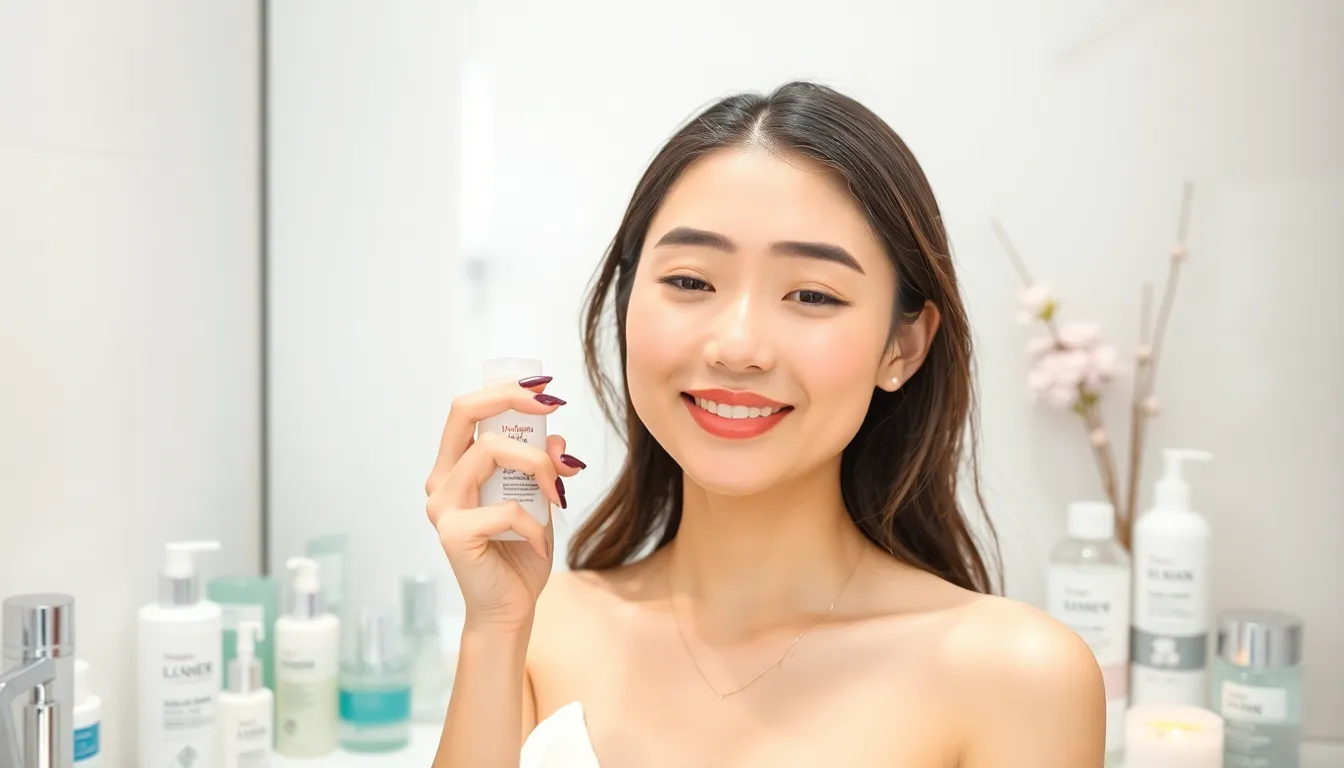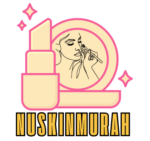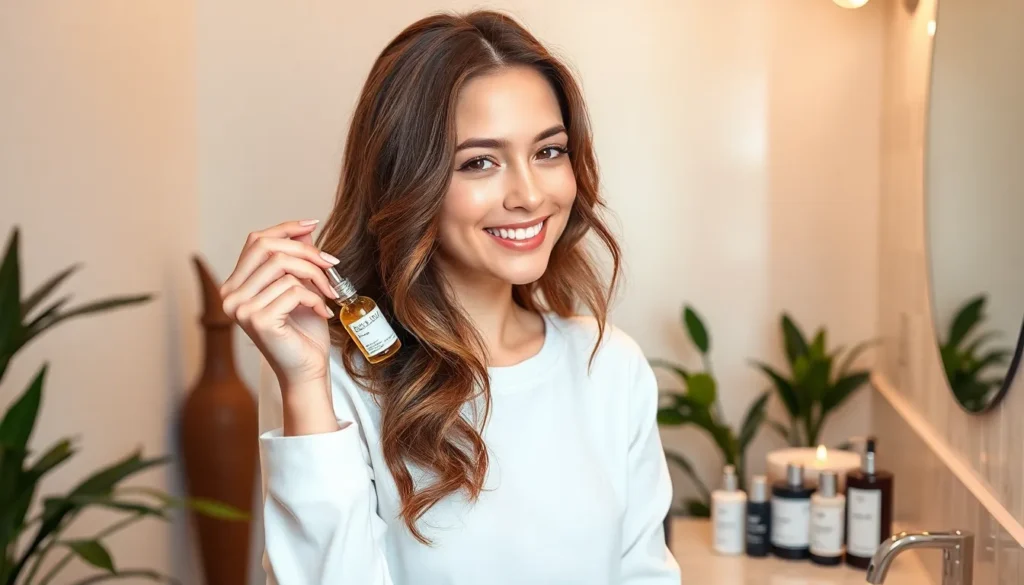Unlocking the secrets of Korean skin care might just be the best decision for your complexion. With a regimen that could make even the most seasoned beauty junkie raise an eyebrow, Korean skin care isn’t just a trend; it’s a lifestyle. Imagine a world where your skin glows like a K-drama star, and you might just find yourself wondering why you didn’t start this journey sooner.
Korean Skin Care
Korean skin care represents a holistic approach to skin health, focusing on prevention, nourishment, and hydration. This regimen prioritizes a radiant complexion through meticulous routines and quality products.
The Philosophy Behind Korean Skin Care
Addressing skin concerns begins with understanding one’s unique skin type. Emphasis lies on gentle cleansing, moisture retention, and treating specific issues like acne or hyperpigmentation. The ten-step routine exemplifies this philosophy, incorporating layers of hydration and protection. Enriched ingredients from nature, such as green tea and snail mucin, play essential roles in nourishing the skin. Continuous care and consistency create a lasting impact on skin health.
Key Differences From Western Skin Care
Korean skin care typically focuses on prevention while Western approaches often fixate on correction. Layers of hydration mark Korean routines, contrasting with the minimalist styles frequently seen in the West. Ingredients hold significant importance in both, but Korean products often utilize unique formulations featuring herbal extracts and innovative technologies. Moreover, the Korean approach embraces frequent use of essences and serums, while Western routines may rely heavily on moisturizers. Overall, attention to detail distinguishes the two methodologies, creating a noticeable difference in outcomes.
Essential Korean Skin Care Steps

Korean skin care consists of multiple steps that work together to enhance skin health and appearance. Following these essential steps ensures a thorough regimen that promotes a radiant complexion.
Cleansing
Cleansing represents the foundation of the Korean skin care routine. The double cleansing method often includes an oil-based cleanser followed by a water-based cleanser. Oil-based cleansers effectively remove makeup and impurities, while water-based cleansers provide additional cleanliness. This two-step process ensures no residue remains, paving the way for better absorption of subsequent products.
Exfoliating
Exfoliating serves to remove dead skin cells, promoting a brighter complexion. Korean skin care advocates for gentle exfoliation, often using chemical exfoliants rather than physical scrubs, which can irritate the skin. Products with ingredients like alpha hydroxy acids or beta hydroxy acids offer effective results. Exfoliating 1-2 times a week helps maintain skin texture and allows other products to penetrate more effectively.
Toning
Toning rehydrates and balances the skin after cleansing. Korean toners differ from traditional ones, emphasizing hydration over astringency. Lightweight toners often contain beneficial ingredients like hyaluronic acid or botanical extracts. Applying toner can improve moisture retention and prepare the skin for serums and moisturizers, ensuring optimal hydration.
Moisturizing
Moisturizing occupies a crucial role in the Korean regimen. Various formulas exist, including gel creams and rich creams, catering to different skin types. Korean moisturizers often contain ingredients such as snail mucin or ceramides, which boost hydration and skin barrier function. Applying moisturizer helps lock in moisture while leaving the skin feeling soft and supple.
Sun Protection
Sun protection remains vital in any skin care routine, including Korean practices. Daily application of sunscreen with broad-spectrum SPF is essential for preventing skin damage and premature aging. The lightweight sunblock options commonly found in Korean skin care provide adequate protection without a greasy finish, ensuring the skin stays healthy and radiant throughout the day.
Popular Korean Skin Care Ingredients
Korean skin care features unique ingredients known for their effectiveness and skin-enhancing properties. Each ingredient serves specific functions, contributing significantly to overall skin health.
Hyaluronic Acid
Hyaluronic acid stands out for its exceptional moisture-retaining capabilities. It binds water to skin cells, enhancing hydration and plumpness. This ingredient suits all skin types, making it a versatile choice in many products. With regular use, individuals notice a significant reduction in dryness and fine lines. Many Korean moisturizers and serums utilize this powerful ingredient to provide lasting hydration. Products containing hyaluronic acid promote a radiant and youthful complexion.
Ginseng
Ginseng is revered for its anti-aging properties and ability to improve skin elasticity. This herbal extract stimulates blood circulation, which aids in delivering nutrients for healthy skin. Additionally, ginseng provides anti-inflammatory benefits, making it effective for calming irritated skin. Many essences and serums incorporate this powerful root to energize and rejuvenate the complexion. Users often experience a boost in skin brightness and radiance after regular application. Ginseng embodies the holistic approach of Korean beauty.
Green Tea
Green tea boasts powerful antioxidant properties, making it a widely used ingredient in Korean skin care. This natural extract helps combat environmental stressors and reduces signs of aging. Inflammation and redness decrease significantly when green tea is included in skin care routines. Many Korean products, like toners and masks, feature green tea to provide soothing effects. Regular use leads to a clearer and more balanced complexion. This ingredient encapsulates the essence of preventive measures in Korean skin care.
Tips for Customizing Your Routine
Customizing a Korean skin care routine involves understanding individual skin needs and product compatibility. Tailoring the regimen ensures optimal results and skin health.
Identifying Your Skin Type
Determining skin type sets the foundation for effective product selection. Oily skin tends to produce excess sebum, while dry skin requires additional moisture. Combination skin includes both oily and dry areas, whereas sensitive skin may react negatively to certain ingredients. Conducting a patch test can help identify irritants. Consulting a dermatologist may provide further insights. Knowledge of these variations contributes to more effective treatment.
Layering Products Effectively
Effective layering enhances product absorption and maximizes benefits. Begin with the thinnest textures, applying essences before heavier creams. Serums follow, delivering concentrated ingredients directly to the skin. Moisturizers lock in hydration, so choose one matching skin type. Sunscreen serves as the final step during the day, safeguarding against UV damage. Allow products to absorb fully between applications for best results. Mastering this technique builds an efficient and beneficial routine.



